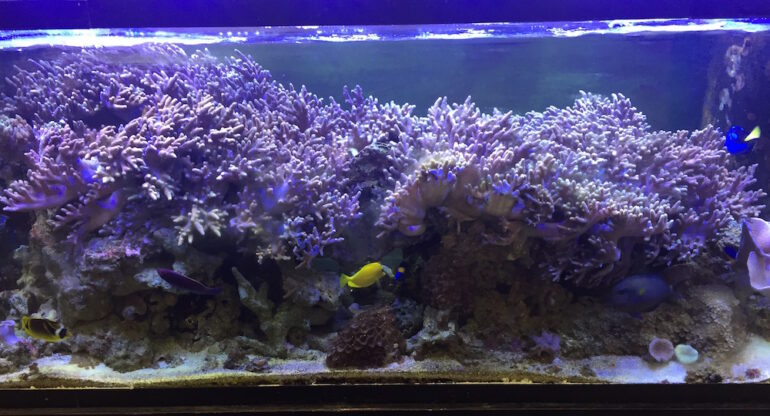As St. Bernard wrote “The Road to Hell is Paved with Good Intentions”. With the meaning of this is that we often do things with the best of intentions, but invariably they often lead to suffering. Unfortunately, this is often the case in the hobby as well, in that we sometimes add things to our tanks with the best of intentions, but invariably they cause grief and aggravation once they are in the tank.
I have done this myself countless times where I have added something to the tank thinking it would be a nice addition and couldn’t possibly cause any harm only to have to try and remove it some time later. So to try and reduce the likelihood of you doing this I am going to try and provide a primer of all the things that potentially can cause problems over the long term.
Some of them you probably know, but a few have come to surprise me and some others as to how much of a pest of pain they can become over time. It has also been my experience that things that are pains tend to grow and reproduce significantly faster than anything that we want to grow. This falls in line with the axiom that when you lose a coral it is typically the most expensive, rarest or most favorite coral you have, while the brown or boring corals will survive anything.
Is That Fish Reef Safe?
The first of the things we add to our tanks intentionally that can cause problems down the line obviously are the fish we choose. While there is a list of perceived “reef-safe” fish, there is an even longer list of possibly “reef-safe” fish that unfortunately many completely reef-safe fish fall into.
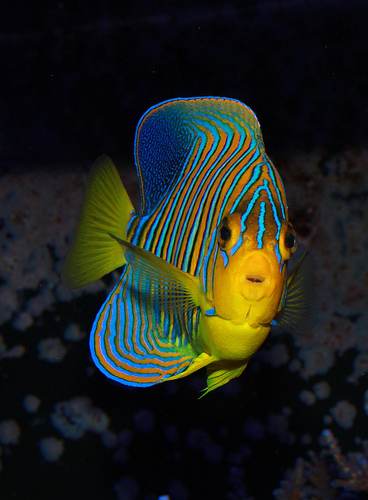 By that I mean I have had, seen or heard about fish that for years never bothered a coral of any type, their tank mates or anything else for that matter. However, for some reason something kicked in at some point and all of a sudden they became voracious coral feeders or bullies or simply horrible fish to have in a tank.
By that I mean I have had, seen or heard about fish that for years never bothered a coral of any type, their tank mates or anything else for that matter. However, for some reason something kicked in at some point and all of a sudden they became voracious coral feeders or bullies or simply horrible fish to have in a tank.
I would love to be able to say one fish always does this, or adding this coral causes some fish to do that, but these occurrences are so random that it is difficult to make a determination as to exactly what has occurred. In my own tanks, I have had angelfish, both small and large not bother anything for years and then all of a sudden start eating at best some corals or at worst nipping or eating every coral.
The worst of these are a Red Sea Regal Angelfish that has a strong appetite for wall type Euphyllias. It totally decimated my Euphylia garden after ignoring it for over a year. One it started eating them it could not stop.
However, it does not seem to like torch type Euphylias. I have no idea why and I can only hope that it doesn’t suddenly develop an expensive appetite for these anytime soon. Similarly, I have had tangs suddenly start picking at the bases or Acroporas or pick at the mantles of clams, all after ignoring them for extended periods of time.

Just as bad, I have had Peppermint hogfish that I had for years, with the same inhabitants, with nothing new added to the tank, suddenly go on a search and destroy mission and kill off half of the tank’s other members before I could get it out of the tank. In a different tank a large fairy wrasse did the same thing to all of the other wrasses and long skinny fish in the tank, but instead of killing them himself he harassed them enough that they either starved or jumped out of the tank.
I thought the tank was well-covered, but this fish was so relentless, he drove them all to find a tiny hole in the cover through which they all jumped out. This fish was also smart as he did not show this behavior when I was in front of the tank or feeding it. Only when added a camera and observed the tank out of the room was it possible to see what was going on.
Curiously, in this same tank, which also houses some tangs, when a couple of larger tangs were introduced, the smallest tang in the tank there were 4 other larger tangs present as well, a powder blue tang, (yes known as an aggressive fish) became the dominant fish and harasses all of the other tangs and angelfish. So while my intention was good as I was hoping adding more tangs would spread out the aggressiveness in reality it had the opposite affect.

Overgrown Mushrooms
If only good intentions wrecking havoc were limited to fish, this hobby would be much easier. Unfortunately, intentionally adding some invertebrates can have similar consequences. The first of these paths to the underworld that I added intentionally that caused problems were mushroom anemones.
I, like most of you, hate to kill any live things that we come across in our tanks. In this instance, it was nicely colored small blue speckled mushroom that was attached to a piece of live rock that an Acropora was attached to. Foolishly I did not think it could cause any harm, as after all it was already on the Acroporas rock. Five years later I must have removed a thousand of these pests from my tank with no end in site.
They grow in every nook and cranny in the tank and pop up whenever or wherever there is an empty space. While they do not seem to sting the stony or other corals in the tank, they do seem to either irritate them or grow over them enough that they have to be considered a pest. They are also a pest as it seems that even when they are removed by scraping, brushing or other means if even a portion of them is left it grows into a whole new mushroom(s).
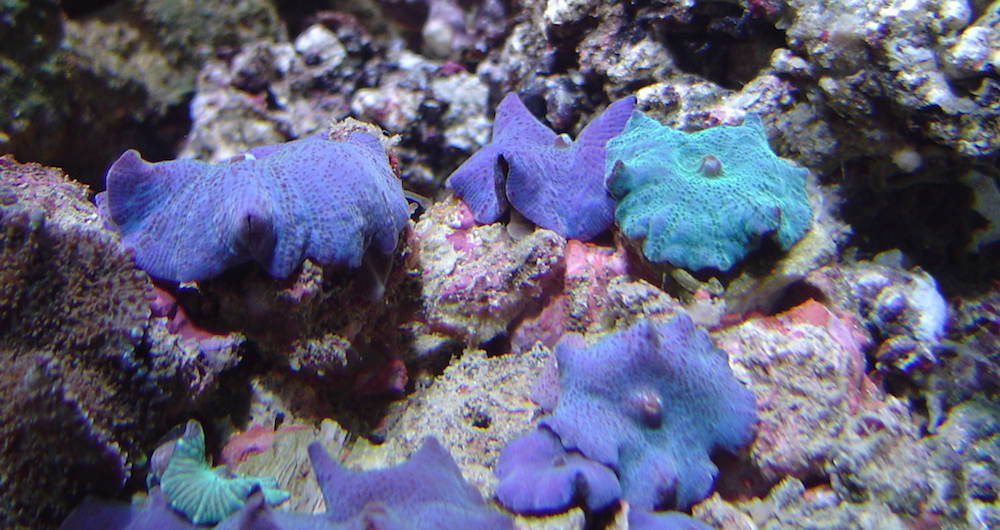
Sadly, this is not a bounce or a jawbreaker or I could be retiring due to the pace that this mushroom grows. However, I do not feel as bad as I did when I saw the tank of a friend who just let these mushrooms grow. In his tank they almost covered the entire tank.
Never Ending Soft Coral
Unfortunately, I have seen the same thing happen when a soft coral was allowed to grow unimpeded. In a 300- gallon tank that I helped set up approximately 6 years ago, however over time a nice looking purple Sinularia had grown and out-competed virtually every other coral in the tank. I found this to be remarkable as when we set the tank up it was full of different soft corals and for all intents and purposes it looked like a typical mixed soft coral tank full of leather corals, mushrooms, anemones and lots of fish.
However, over the course of four years, I helped set it up but did not take care of it, an outside maintenance company did that, the Sinularia grew over virtually everything in the tank, even crowding out the anemones and mushrooms. While diving, I have seen fields of soft corals cover vast tracks of the substrate, but I had never seen a tank filled where only one coral dominated.
Especially when that one coral was no larger than my hand when we put it in the tank. While seeing this tank for the first time after it had been overgrown was impressive, the owners told me that they thought it was pretty boring so soon after I saw it they had all the rock and the soft coral removed and they redid the tank the same way that its was done before, sans no Sinularias.
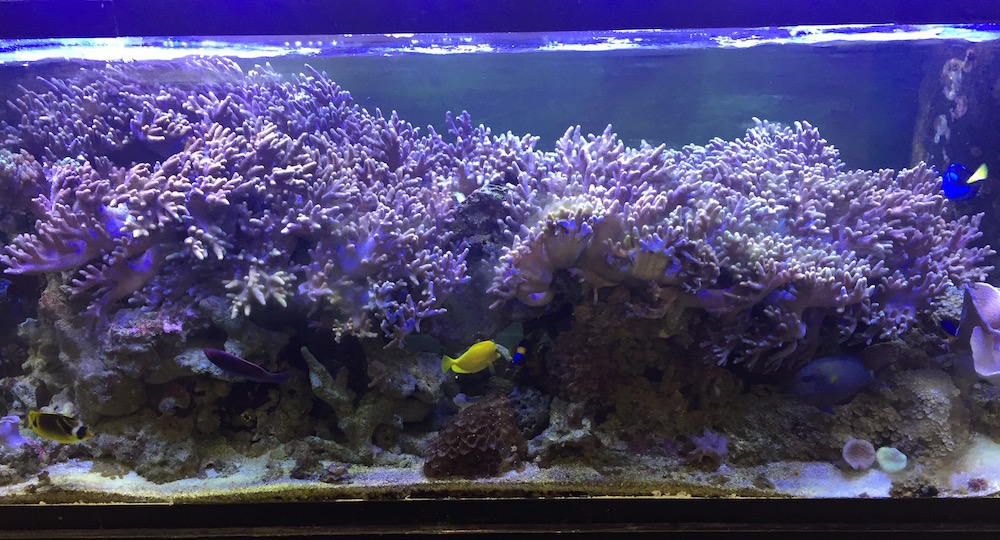
What is funny is that this same tank had actually experienced something similar when we took it down and rebuilt it the first time, but for a different reason. Then we took it down to replace the acrylic tank with a glass tank as the acrylic was so scratched you could not see into it.
However, in this instance, Palythoa was the organism that dominated the tank, but it did not dominate completely, so we kind of did not notice as much, it was just the most widespread organism when we took the tank apart. However, it had the same impact as did the Sinularia and actually even greater impact. This greater impact was twofold.
First, at the time we did not know how toxin palythoa toxin was as when we removed all of the corals from the tank and put them in vats full of the tank water this was enough to cause the palythoa to release its toxin. As a result, all of the fish and corals that had been living happily with it for years were all dead the next morning, except for the palythoa.
We could not figure out what happened at the time because all six of us that had worked on the tank were either in the hospital or at home with what we all thought were bad cases of the flu. I say flu, because the symptoms we each had while similar, were different enough that we could not figure out a common cause other than we had worked on the tank and moved corals.
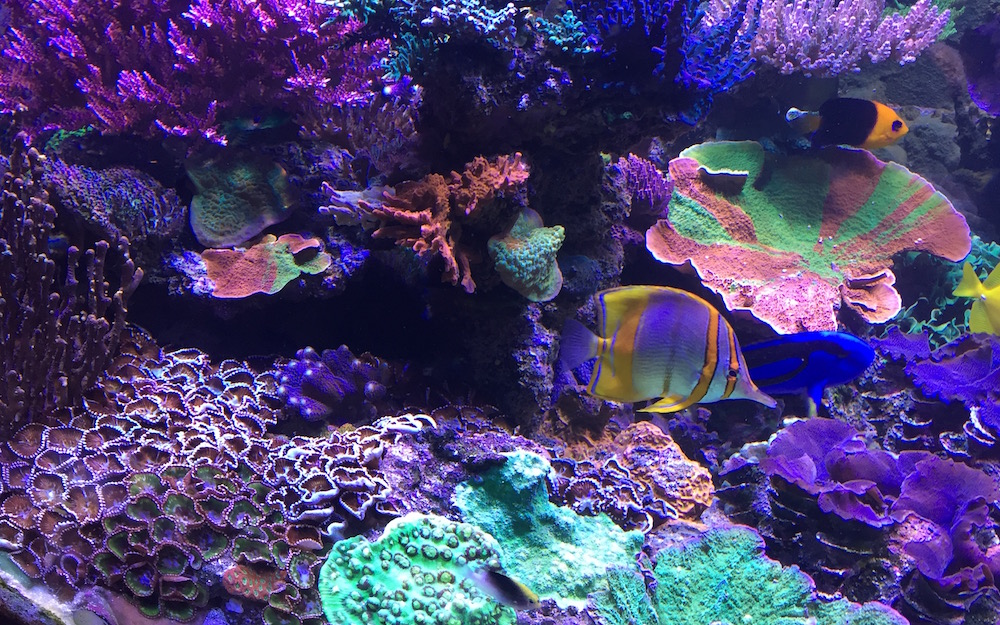
While Palys can be beautiful and some even collect them, I now steer clear of having any in my tanks or even adding them inadvertently on a piece of rock lest I have these problems again.
Another coral that has been in the hobby pretty much since the beginning and which many of us have added due to its brilliant green color are star polyps. In the early days of the hobby, this was one of the few colorful soft corals available, so because of this, it was one of the most desired corals we could obtain. For this reason, for many hobbyists just starting out it is still considered a good “beginners” coral.
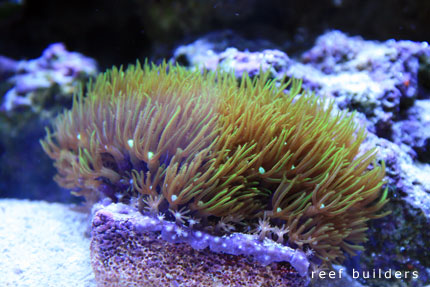 However, for those of us who have sps or lps dominated tanks, this coral is a bane to our existence as even though we may have added it to grow on the bottom or some bare spot in the tank, it can quickly overgrow and snuff out anything in its path.
However, for those of us who have sps or lps dominated tanks, this coral is a bane to our existence as even though we may have added it to grow on the bottom or some bare spot in the tank, it can quickly overgrow and snuff out anything in its path.
So even though we add it with good intentions, it is a coral that should only be kept with other soft corals or grown on a rock away from other corals where it can be removed it it starts becoming a pest.
Xenia Invasion
Unlike star polyps, which have always been readily available, the soft coral Xenia, was for a long time one of the most sought after corals we could have in a soft coral dominated tank. It was desired due to it being the only soft coral that actually pulsed, which made it unique.
It was also highly desired because it was difficult to obtain, as it shipped poorly, so rarely were you able to get it home alive. However, over time people began propagating it so lots of us began keeping it. Then when much of the hobby shifted from soft coral tanks to sps dominated tanks many of us still wanted to keep it in our tanks due to its unique pulsing property. This was a mistake. Actually a big mistake.
Unlike our soft coral tanks where most of the soft corals have some sort of defense mechanism to keep from being overgrown, in the pristine brightly lit sps tanks we had this coral tended to go crazy and quickly, and I mean literally in a few weeks, totally overgrow any nearby stony coral.
This was possible in that given the right conditions this coral not only grew by spreading out from the base, but if a polyp attached to the substrate a new colony could grow out from that and it also could produce sexually as well. Because of this ability to quickly dominate a sps tank, this coral is now out of favor with much of the hobby.
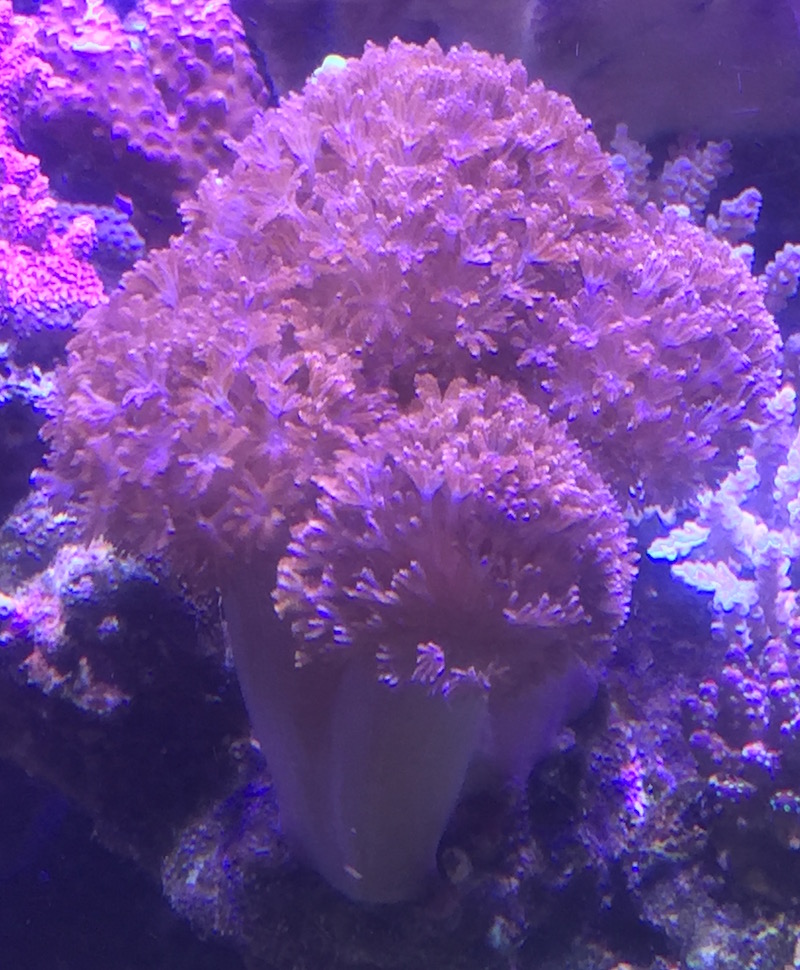 Understanding this and the possible threat this coral presented I still keep Xenia in my 300-gallon sps dominated tank. But I do not keep just any Xenia. I keep a Xenia species whose stalks can grow as thick as your arm, and that not only does not overgrow sps corals, but that also has not shown any inclination to rapidly grow or to sexually reproduce.
Understanding this and the possible threat this coral presented I still keep Xenia in my 300-gallon sps dominated tank. But I do not keep just any Xenia. I keep a Xenia species whose stalks can grow as thick as your arm, and that not only does not overgrow sps corals, but that also has not shown any inclination to rapidly grow or to sexually reproduce.
I bought this Xenia as a single stalk at a frag swap 4 years ago from a propagator from Long Island who told me its properties. Over four years this single stalk has grown into 5 stalks, one of which I recently gave to Sanjay to see if he gets the same perfect slow growth rate that I do. Unless you can find this Xenia, which still pulses like mad, this is not a coral to add to your sps tank.
In the same vein, it’s cousin, Anthelia, is another soft coral that can be problematic in a sps dominated tank. Unlike Xenia however, it does not tend to grow over the sps corals from the base. Instead, it fools us by seemingly dying. That is one day you have a nice thriving colony and and next, poof it has disappeared.

Don’t be fooled however, as this is a trick to lull you into the sense that it is gone. Instead it has gone into sexual production and in the next week or two your tank will suddenly be full of tiny Anthelia colonies growing over everything.
In this regard this coral is like Xenia in that these colonies will quickly grow over sps corals blocking them from light and hence suffocating them. So like most Xenia species, this coral in my opinion should not be added to a sps dominated tank.
Watch Out For Anemones
While most soft corals have been around for a long time and have been the corals for beginners, anemones, and especially colorful bubble anemones have only become widely available relatively recently. In fact, for a few years it was almost impossible to even find a bubble tipped anemone and when you did its price was astronomical.
Fortunately however, the collectors of anemones have discovered how to propagate them so now they are widely available. And for the most part seeing a pair of clownfish frolicking in an anemone is still one of the sights that get many of us into the hobby. But as has been the case with Xenia and other soft corals, the now perfect conditions that many of us keep our sps corals in are also prefect for bubble tip anemones.
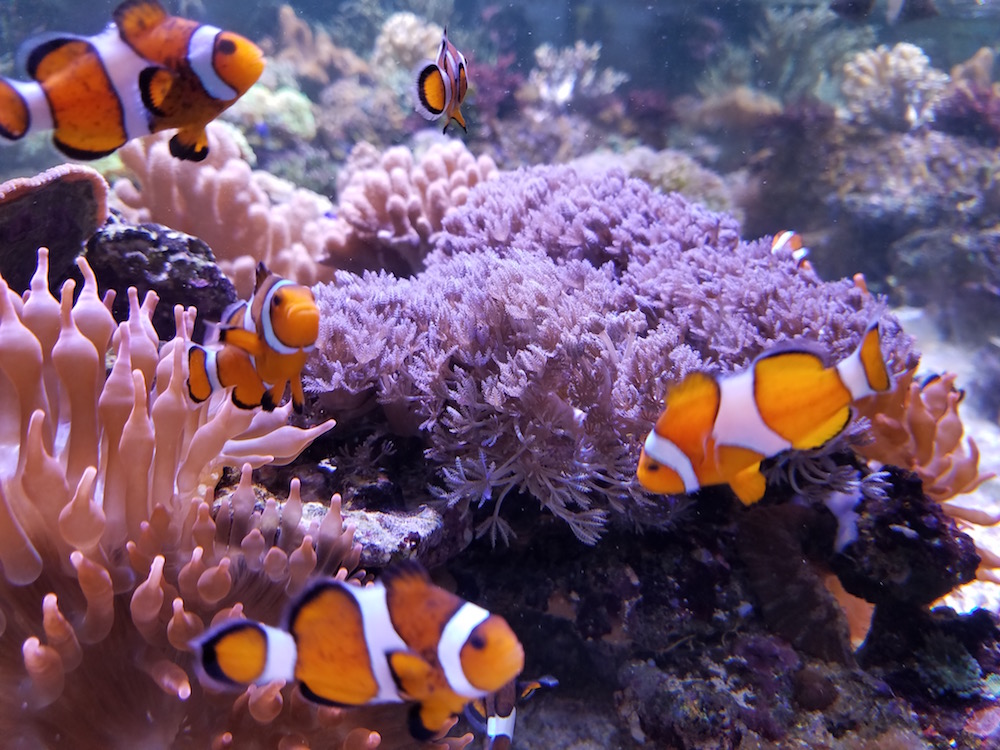
And as with Xenia and other soft corals if we aren’t careful these animals will start splitting and can quickly dominate a tank. And unlike Xenia, anemones sting, and their sting is powerful enough that they can kill any neighboring corals that are near their lair.
In my 300-gallon tank I keep two of these interesting animals along with clownfish to keep them happy. I have found that at first they will roam around until they find a spot where they are satisfied and then settle in. It should be noted that they will also start roaming if they are unhappy after settling in, so this should be noted if it happens.
Once they have settled on a spot, if I have had clownfish with them they have stayed in that spot, but they do burn anything that is near them so this need to be taken into account. So in this regard I have moved the nearby corals and left them alone for now over 2 years. So that would be great if they stayed that way.
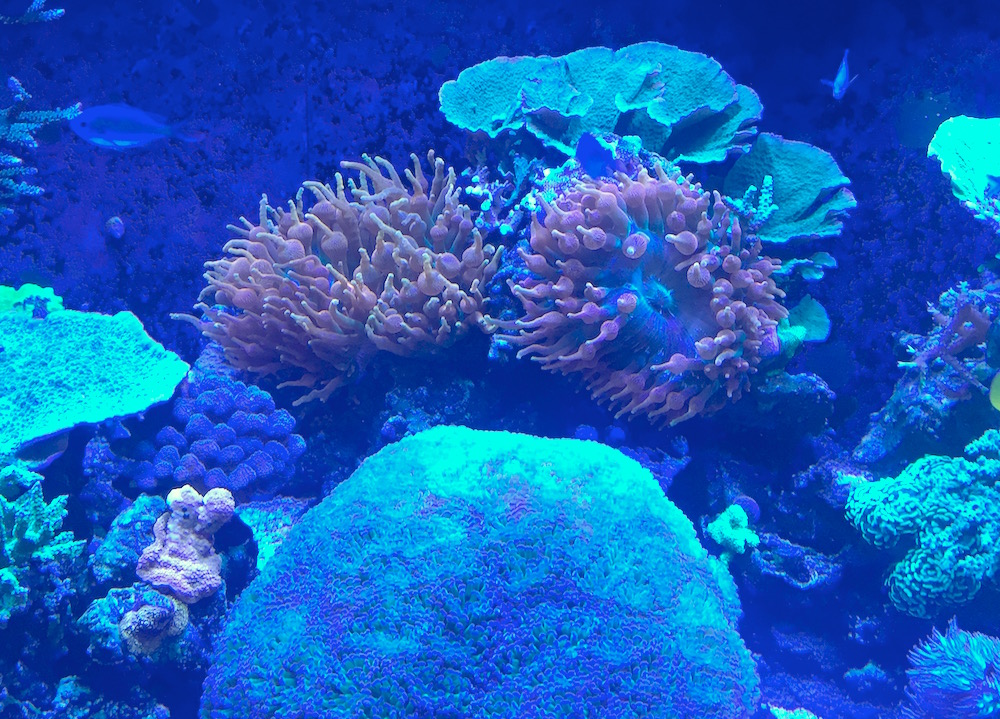
Unfortunately, they are so happy in their spots that over 6 months or so they grow to approximately 10-12” in diameter, after which time they split into two daughter anemones. One has always stayed in one spot, while the other starts roaming around the tank. This “roamer” is problematic as it burns the corals it comes into contact with as it tries to find a new home. So now when this happens this second daughter is removed as soon as I can retrieve it.
If I left these anemones on their own, and did not remove them after they split in two years there could over 16 of them, each filling a square foot of the tank. So while my intention of adding a couple to provide that anemone clownfish focal point was a good idea, I need to stay vigilant to keep it from taking me and the tank down the dark path.
Bad Choice Of Equipment
Good intentions in the tank are not just limited to fish and corals however, we can also take the tank down the bad path with the addition of equipment as well. One piece of equipment that is added with good intentions is the alcohol fed nitrate reactor.
For many years we all wanted to keep nitrate as low as possible. As a result, various means for keeping nitrate levels low have been used, with the alcohol fed nitrate reactor being one of the most efficient ways to do this. Unfortunately, it is also one of the devices we can use on our tanks that has a high rate of human error associated with its use.
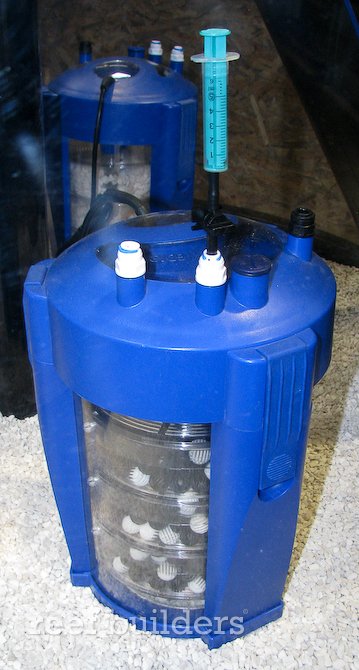 Like the name says it requires alcohol to fuel the bacteria that consume the nitrate. It has now been my unfortunate experience to see first-hand what can happen when an excess of alcohol is introduced into the reactor on several occasions. In these instances, the addition of excess alcohol caused a massive proliferation of the bacteria not only n the reactor but also in the tank itself.
Like the name says it requires alcohol to fuel the bacteria that consume the nitrate. It has now been my unfortunate experience to see first-hand what can happen when an excess of alcohol is introduced into the reactor on several occasions. In these instances, the addition of excess alcohol caused a massive proliferation of the bacteria not only n the reactor but also in the tank itself.
When this bacterial bloom occurred in the tank it was a gram negative bacterial bloom, which resulted in massive infections in not only the fish, but in a lot of corals as well. In two of the cases where I saw this it occurred in large tanks, and seeing so many fish die with hemorrhagic lesions all over their bodies while most of the corals were bleaching is not something I want to see again. So if you do run one of these reactors please take precautions to make sure that there is no chance for this to occur.
A more benign, but more frequent event that can be a good intention gone bad is when we add new more powerful powerheads to our tanks. We are fortunate in that there are now a wide variety of strong powerheads available to produce all the water movement we need in our tanks. However, we often do not apply the concept of going slow and acclimating our tanks to this as we do when we add new more powerful lighting.
As a result, it ha been my own bad experience that when I did this and did not give the fish and corals time to acclimate to more powerful flow and intake that bad things happened. Fish that were not given time to get used to the stronger intake often found themselves sucked into the intake and if I was not present they would quickly die after being drawn into the powerhead.
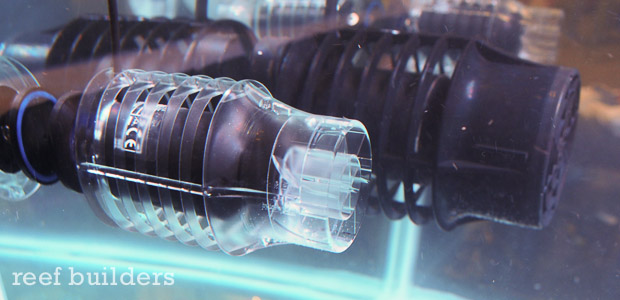
Similarly, if the flow was suddenly just boosted to the maximum and the corals were not gradually acclimated to it, their tissue would sheer off. So as with most things in this hobby, when you change something do it slowly, otherwise your good intention could produce an affect completely opposite to the one you desired.
St. Bernard was not the only one who talked about the impact good intentions could have, it is also in the Ozzy Osbourne song Tonight. So while I’m sure any time we do anything or add anything to our tanks we do so with the best of intentions.
Hopefully, as I demonstrated here, doing or adding these good things can have undesired consequences. So as with anything you do in this hobby, go slow and acclimate things properly before you change or add anything your tank. Do your homework to make sure something you change or add doesn’t move your tank in a negative direction. By so doing your good intentions will move your tank in the right direction.


